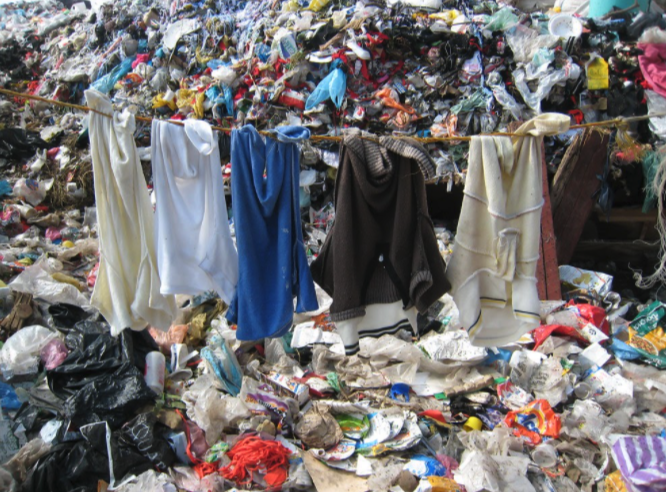Fast Fashion: The Trendy Destruction of our Planet
As the fashion industry grows, finding cheap alternatives to trendy clothing is becoming more of a demand. “Fast fashion” , a term that has become more prominent surrounding the topic of fashion, is the ‘solution’ to this demand. The term refers to “cheaply produced and priced garments that copy the latest runways and get pumped quickly through stores in order to maximise on current trends.” Retailers are able to create large quantities of product at rapid speed for low prices.
However with the rise of social media and the increase of fast fashion brands another issue surfaces: microtrends.
Trends that used to last up to ten years are being replaced by trends that are popular at the beginning of a season and out by the end of it. Microtrends are making fast fashion faster as more people want to join in on the trend, despite the trend going out of style a couple of weeks later.
This all inherently leads to one major problem: overconsumption.
As more clothes are being bought in order to keep up with the current trends, clothes that are no longer ‘in style’ are being thrown out in bulk. According to Business Insider, consumers as a whole bought 60% more garments in 2014 than they did in 2000. This is because we have more access to clothes. Instead of going to a store to buy clothes, we order online and what we don’t like we return. However most clothes that are returned via online are thrown out. 85% of textiles are thrown out each year. 57% of the clothes that are thrown out end up in landfills, which is harmful for the environment. The rise in microtrends is causing a shift in priority, we no longer prioritize quality, instead it is all about quantity. Clothes are no longer meant to last with overconsumption having a negative impact on both social and environmental aspects of the world.
Fast fashion also impacts societal problems. 80% of textiles are made by women between the ages of 18 and 24. In a 2017 report by the US department of labour, evidence was found of forced labour, as well child labour in countries including: Argentina, Brazil, china, India, Turkey, Vietnam and others. Many fast fashion brands utilize non ethical methods of labour such as having poor working conditions and underpaying employees. Despite the job opportunities the fashion industry has generated, the pressure that is caused on deadlines to produce clothing is leading female employees to be victims of gender based violence.
The economic impact of fast fashion further solidifies the idea that fast fashion is doing more harm than good. In order to produce clothes at low prices and rapid speed brands use fibres such as polyester, which is inherently plastic. An estimated 60% of all garments produced contain polyester. Furthermore, to produce polyester two to three times more carbon is released than when cotton is produced.
Since polyester is essentially plastic it takes hundreds of years to decompose and doesn’t break down in the ocean. Additionally, washing clothes that contain polyester releases roughly 500,000 tons of microfibres into the ocean, yearly which is the equivalent of 50 billion plastic bottles, according to business insider. Furthermore, according to the international union for conservation of nature an estimated 35% of all non biodegradable microplastics in the ocean come from washing synthetic textiles, e.g. polyester. The fashion industry consumes a tenth of all the water used in industrial settings as it takes roughly 10,000 litres of water to produce one kilogram of cotton. Not only does the fashion industry consume large amounts of water, it causes water-pollution problems as well. For example, textile dyeing is the world’s second-largest polluter of water, since the water containing toxic chemicals leftover from the dyeing process is often dumped into oceans, ditches, streams, or rivers. In many cases the water waste cannot be treated to become safe again. The fashion industry is responsible for 10% of the global carbon emissions caused by human activity.
As a way to counteract the effects of fast fashion, slow fashion is becoming a more discussed topic. It is the reaction to mass production, intense labour and overconsumption. Slow fashion advocates for the manufacturing of apparel in a way that respects the environment and the people. Thrift Flipping, buying second hand clothing and/or supporting ethical and sustainable businesses are examples of slow fashion. Although, not everyone has the means to buy second hand or alter clothing in a way that suits them more, promoting sustainable fashion and limiting how much apparel one buys are easy ways to help fight the negative effects of fast fashion.










